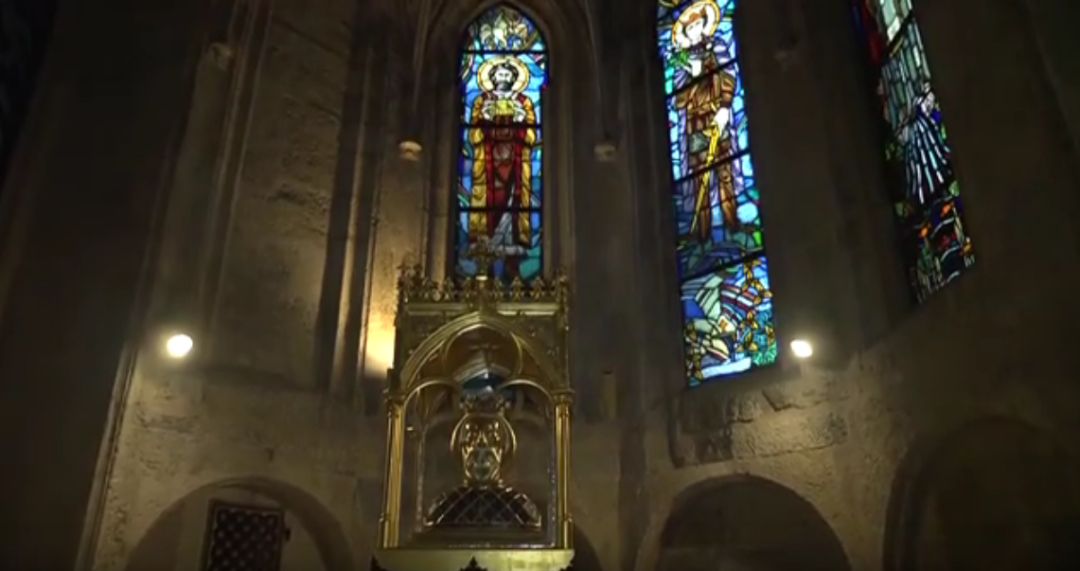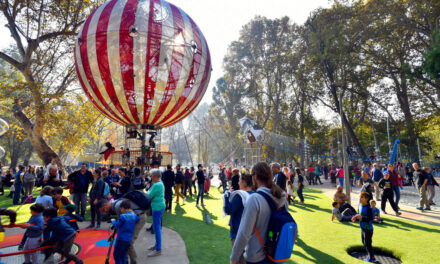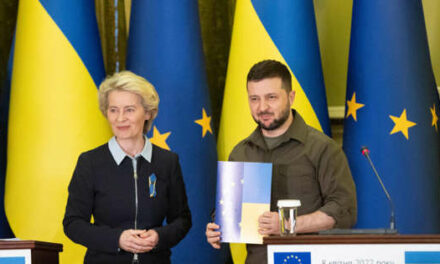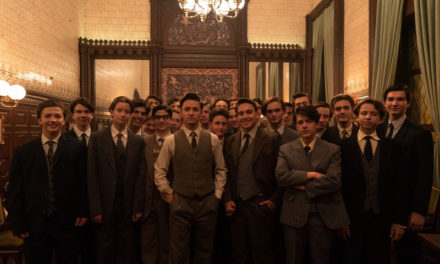"A nation that does not know its past does not understand its present, and cannot create its future!"
Europe needs Hungary... which has never let itself be defeated.
During Solomon's reign, in 1071, the Pechenegs invaded Szerémség again with a large army, where they looted considerable booty.
The Byzantine Greeks were behind the attack , who persuaded the Pechenegs to attack Hungary. Upon hearing the news, Salamon, Géza and László immediately went to the border to defend the country. They captured the castles of Nándorfehérvár and Szerém, winning a brilliant victory over the Pechenegs and the inciting Byzantine Greeks. Due to the distribution of the rich booty, however, antagonism arose again between Solomon and Géza. (In every case, when we discuss the events of the feuds for the throne, a common element can be discovered. Namely, that behind one of the kings or princes aspiring to the throne, in each case, German interests and the support of the emperor stand.)
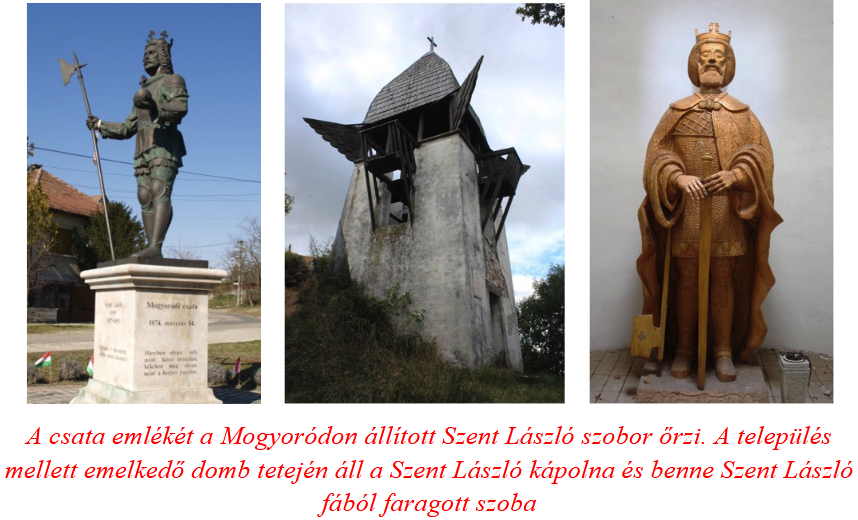
On March 14, 1074, the IV.
Henrik supported him in the clash between Salamon and the Árpád brothers - Géza and László. Solomon suffered a crushing defeat and was only able to escape to the western border with the rest of his men. (He was not lucky with his supporter either, because the power struggle between the emperor and the papacy broke out in these years, which tied up all the strength of Henrik IV.) The Hungarian lords deprived Solomon of his throne and replaced him with Géza. (The battle of Mogyoród is linked to the deer that appears on the scene after the battle, carrying burning candles in its antlers. Following the deer, László and Géza settled on the banks of the Danube, where they founded a church in the area of today's Vác to commemorate their victory. The Franciscans stand near today's bishop's cathedral church, in which King Géza was laid to rest.)
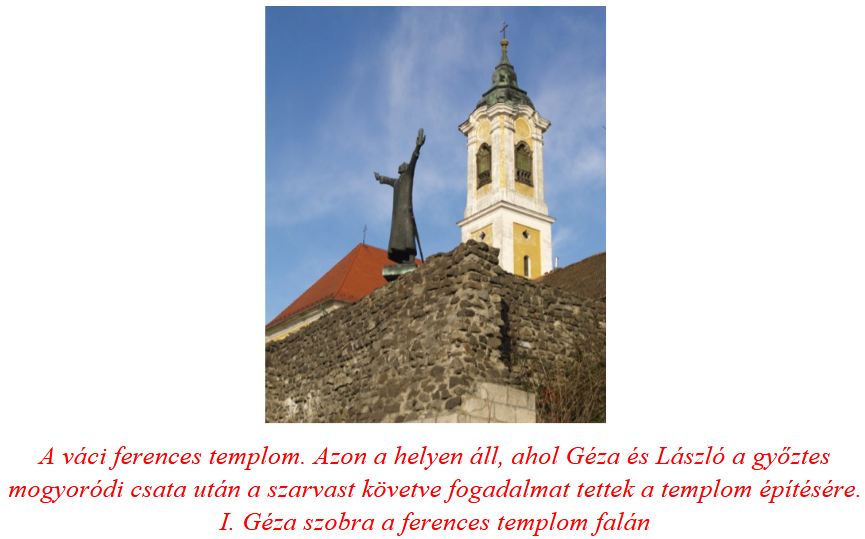
After Géza, one of the greatest kings in Hungarian history, Szent László of Árpád-házi (1077-1095), came to the throne.
, a German vassal who had been deprived of his throne, at first accepted László's power, but soon organized a conspiracy against him. German armies invaded the country again in 1079, but soon retreated. Although László retook the castle of Moson in this campaign and expelled the enemy from the country, Salamon did not renounce his royal title even then.
set an example with his exemplary Christian life, his strict laws that created order in the country, his constructions and

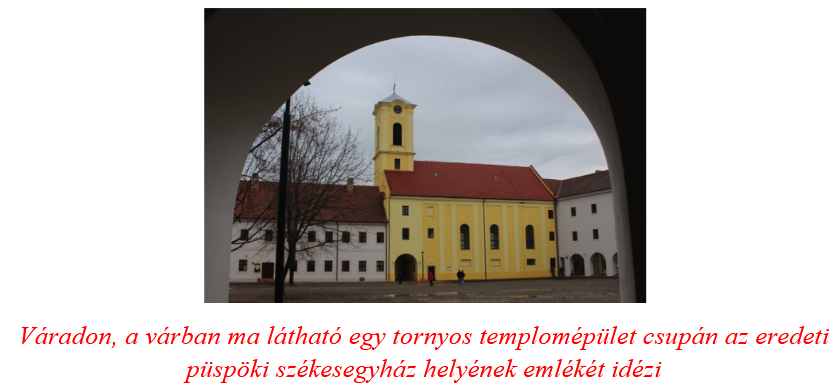
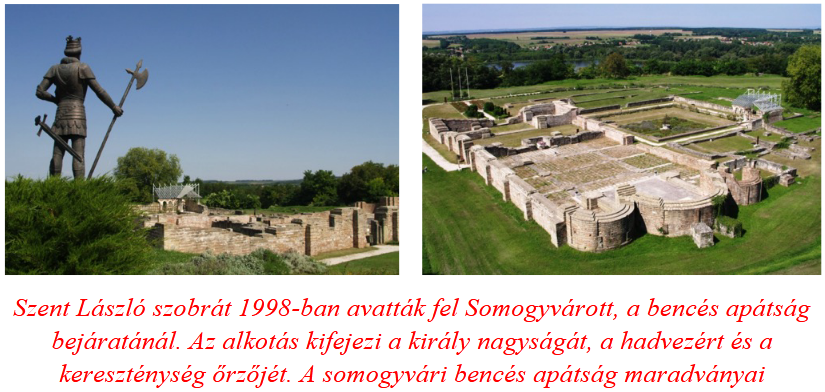
Almost without exception, László's campaigns started as a result of requests for help from relatives and allies. Saint László was a knight king before his time. His most important campaign was in Croatia when his brother-in-law Zvonimir, the Croatian king, died in 1089. Queen Ilona, László's sister, called on the Hungarian king for help in curbing the Croatian lords involved in the feud for the throne. László left for the coast in 1091. On the warpath leading to Dalmatia, László conquered a series of fortifications and then united with the Croatian troops who called him for help. László occupied a part of Slavonia. (Slavonia then meant the entire territory of Dalmatia and Croatia. Dalmatia was only occupied by Kálmán the Book in 1097 and annexed to the Kingdom of Hungary. Kálmán crowned himself Croatian king in 1102, and from then until 1918, for more than eight centuries, Croatia was legally belonged to the Kingdom of Hungary.)
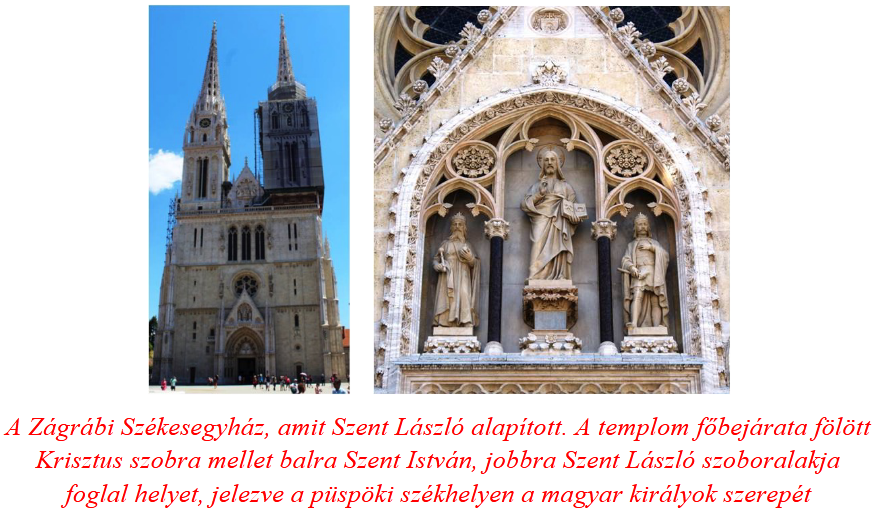 The nearly two decades of Saint László's reign were marked by legislation, the establishment of peace and security in the country, constructions, and
The nearly two decades of Saint László's reign were marked by legislation, the establishment of peace and security in the country, constructions, and
the strengthening of the organization of the church.
However, this could not always happen in peaceful conditions. After all, the power struggle between the pope and the emperor raged in Europe in the second half of the 11th century. The expansion of Venice constantly threatened the states of the Balkans. In 1085, the Pechenegs invaded the country from the east for the umpteenth time. They did not escape their fate this time either, László inflicted a heavy defeat on them. An enemy ring surrounded the country, but King László repelled all foreign attacks.
In 1091, while returning home from Croatia, the news came that the Kunis had again invaded Transylvania with a large army and were wreaking havoc.
King László, like every previous time when the country was attacked, marched there with his army and won a brilliant victory. Force drove him to this campaign as well, since Saint László was the guardian king who protected the Carpathian basin, the heritage, at all costs. In the national defense war, the knight king won legendary victories against the Kunis who invaded our country under the leadership of Kapolcs and later Ákos. It is legendary because, for example, miracles and legends are linked to these battles, among other things. Examples of these are the coin of Saint László, the Tordai hasadek, or the popular stories that have survived on the lips of the people telling the origin of the name of the Csíkszépvíz.
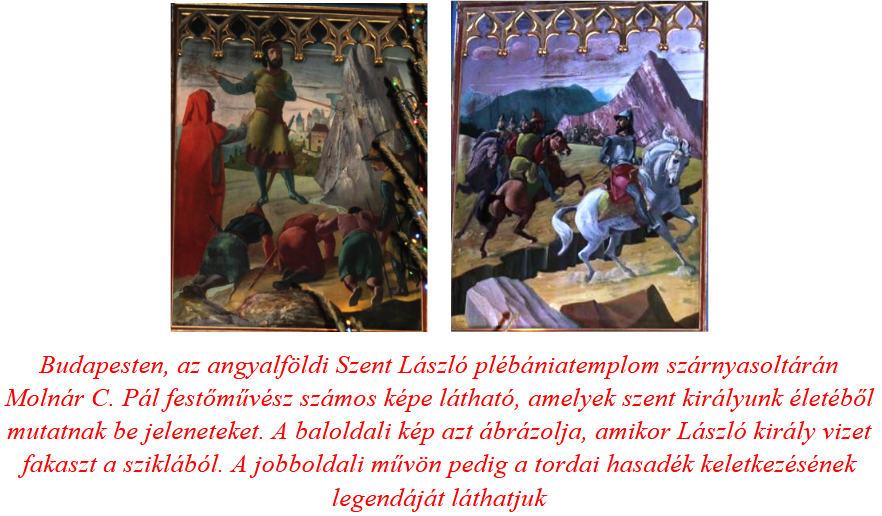
In the second half of László's reign, he pursued an increasingly active foreign policy.
Our great king protected the country in every case, since he still knew the "secret" of the Árpáds, that the attack must be answered with an even stronger counterattack. Otherwise, external military actions will only intensify. This is true even if the country was attacked by Christian armies, he repelled them in the same way as the Peshenians and Kuns. The attacks against the neighboring countries were also justified, because they were related to the Poles, Czechs, and Croats, and if there was a dispute over the throne anywhere, in line with László's 11th century customs and moral expectations, the party asking for help was his/her brother, brother-in-law, nephew, etc. he had to go at /'s call.
In 1092, this is how the Russian campaign /Halics, later the land of Galicia/ took place, against the Russian prince who incited the Kipchaks and Kuns to our country.
The Hungarian army returned home victorious.
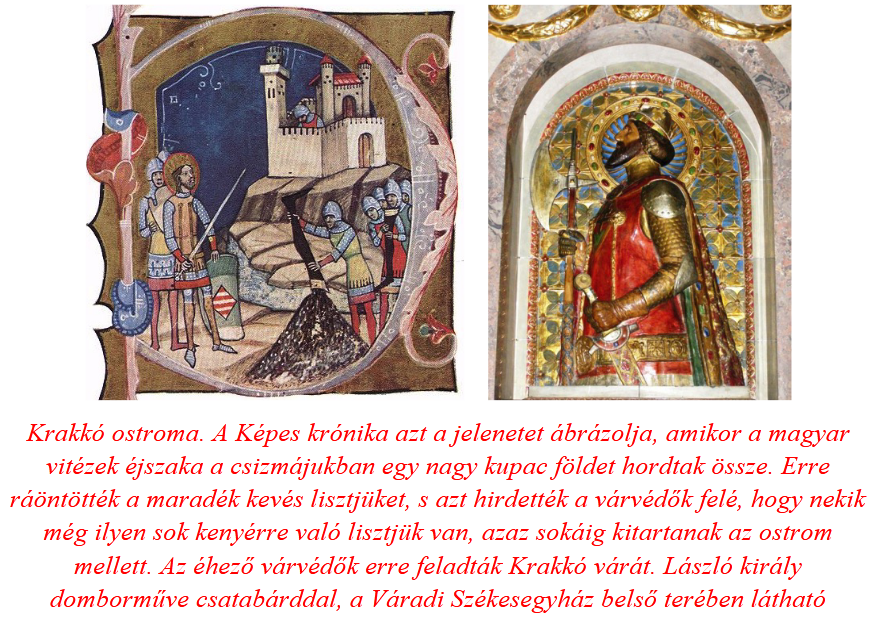 In 1093, László drifted into the Polish civil strife. An interesting story is also connected to this historical event. In 1095, we find King László and his army on the warpath again.
In 1093, László drifted into the Polish civil strife. An interesting story is also connected to this historical event. In 1095, we find King László and his army on the warpath again.
This time he was on his way to Prague, where the request for help came from. His cousin was wronged, he should have been placed on the throne. However, he fell ill on the way and was taken to Nyitra Castle, where King László died on July 29, 1095. (It should be noted that the king was in good health before this. His sudden death is puzzling when we consider that László, the champion of Hungary's rise,
died in the worst period from a Hungarian point of view.) Throughout Europe, the Hungarian king was already surrounded by great respect and esteem during his lifetime. This is also confirmed by the fact that the leaders of Europe and the Pope planned to appoint László as the leader of the planned new crusade.

Saint László's name is primarily used by chivalrous orders, chivalric societies, traditionalists, martial arts associations, armed forces, and military formations.
His entire life entitles him to be the most significant patron saint of Hungarian history.
of Transylvania and Székelyföld within it, as well as borders, Hungarian soldiers and civil guards . His memory is preserved by traditionalists, churches and cities (Várad, Győr). Hungarian soldiers from the Middle Ages until the end of the Second World War, when they went on a charge in any battle, Szent László, help! a battle cry left their lips.

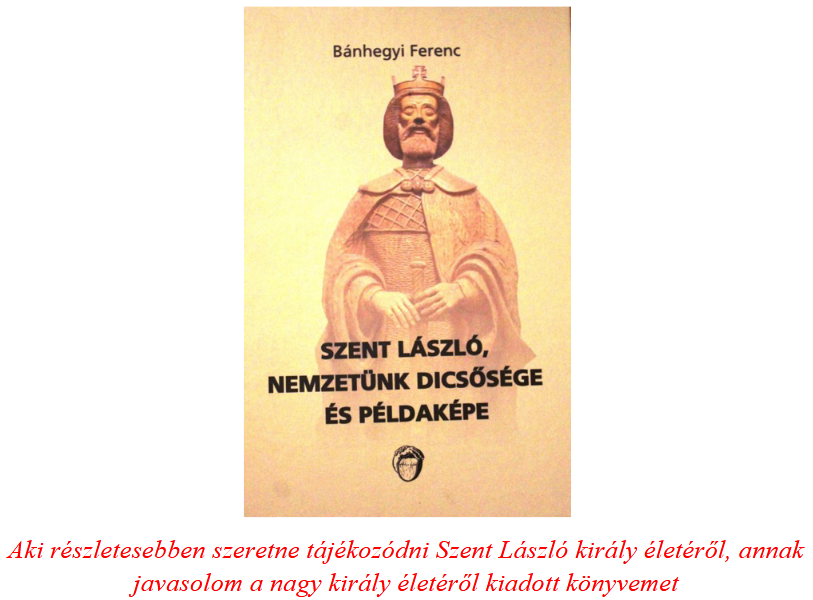

Libra
Two hundred years passed from the founding of the country led by Árpád to the death of Saint László. These two centuries were a period of Hungarian successes and victories. More than a hundred battles took place between the Hungarians and their opponents, of which the Battle of Augsburg in 955 was the only one that was considered a decisive defeat. However, this was not so decisive that it could have exposed the power and greatness of the Hungarian Principality. Nevertheless, the Hungarian history written by foreign hands in both specialist books and school textbooks highlights this and turns it against the development of our people and nation. This has to be put to an end, which is a very easy task, since you just have to put the innumerable positives of the Hungarian creative force and the false claims next to each other. It is no different today.
Author: Ferenc Bánhegyi
Cover image source: YouTube
The parts published so far can be read here: 1., 2., 3., 4., 5., 6., 7., 8., 9., 10.

